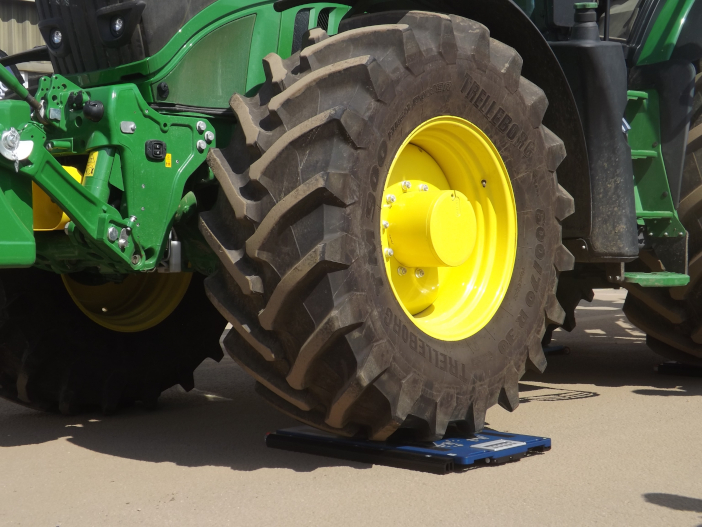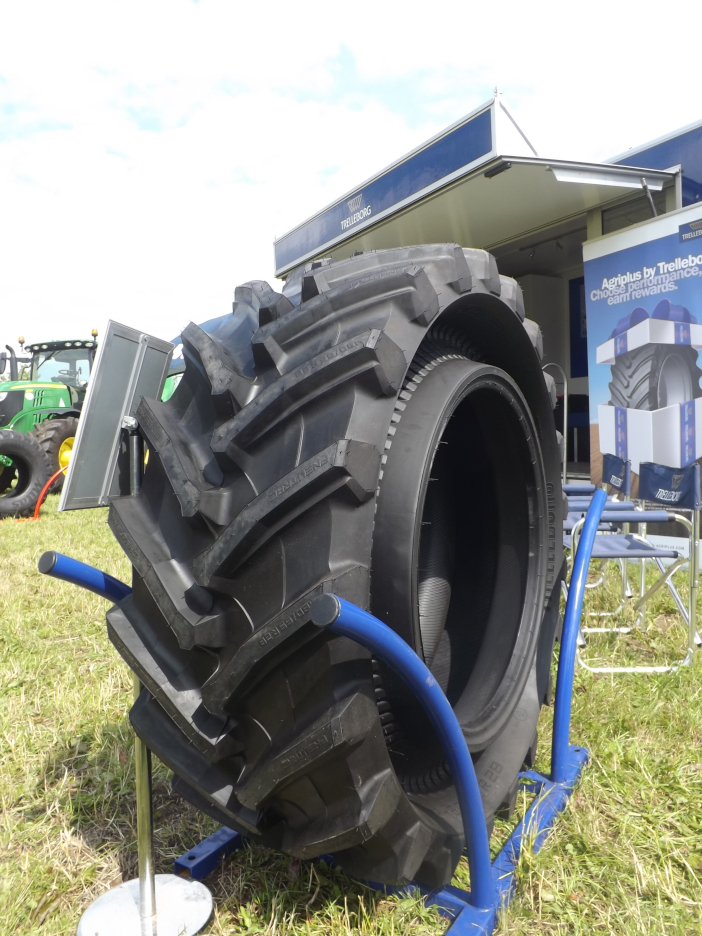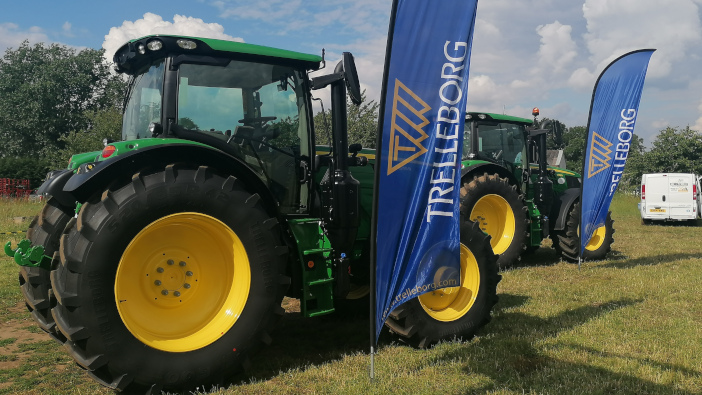The last stop on Trelleborg’s tyre roadshow was the Bedfordshire branch of John Deere dealer Tuckwells. Providing the opportunity for the Trelleborg technical and sales team to see customers face-to-face after more than 12 months of restrictions, as well as highlight the updates from the company since the pandemic began.
At the centre of the event was a talk about how tyre pressures and ballasting can impact operations. Agricultural field manager, Thomas Godwin, talked the crowd through the weighing process and explained the sort of split operators should be aiming for between the front and rear axles.
“You want around 40% of the weight to be on the front axle,” he said. “This is the first point of contact, so you don’t want to compact the ground ahead of the rear axle. Having less weight on the front also takes a lot of pressure off of the drivelines, potentially reducing the maintenance requirements.”
The John Deere 6250R was ballasted with a 1,500kg front weight, with a seven-furrow plough hitched up at the back. Mr Godwin showed how, even with the plough lifted up, the tractor was still putting too much weight down on the front axle.
“The combination of running at the correct pressures and paying closer attention to the tractor ballast will improve efficiency and traction. I’d recommend reducing the front weight by around 300kg and, yes, the tractor may feel like it’s going to rear up when it’s ballasted correctly but that’s simply a case of accelerating steadily,” he explained.

Another interesting takeaway from the talk was Mr Godwin’s advice to only use genuine weight blocks to ballast the tractor. “These will be designed exactly for your tractor, whereas third party weight blocks could have a longer construction, not only making them more dangerous at junctions but also changing how that weight is distributed on the tractor.”
New products
While Trelleborg did not use this event to introduce brand new ranges or a new tyre design, there was plenty of news from its existing portfolio.
One of the tyres that garnered the most interest was the company’s PneuTrac, designed for specialist tractors. Its construction combines a standard agricultural radial tyre with a track, providing greater levels of flexion and double the number of cleats on the ground to improve traction, making it ideal for operations on steep slopes.
Initially only available in VF 280/70R18TL 116A8 and VF 480/65R28TL 148A8 sizes, in June Trelleborg introduced the VF 280/70R20TL 116A8 and VF 420/70R28TL 145A8 models, with a further six sizes, including VF 380/70R24, VF 380/85R28TL and VF 380/70R28TL coming in the future.
Moving onto tyres for high horsepower tractors, the TM 1000 range with the Progressive Traction lug design will have four new sizes introduced this year: VF 650/65R38, VF 750/75R46, VF 900/65R46 and VF 710/60R38.

The PneuTrac has a unique design, said to combine the driving characteristics of a radial tyre with the ground pressure of a track system 
The dual lug design of the Progressive Traction improves grip in the field.
This brings the range up to 15 sizes, including two Narrow Rim Option models. The Progressive Traction design features a second anchor point on the lug, which is said to increase traction, as well as reducing vibration on the road and improving the tyre’s self-cleaning capacity.
The TM 1000 range is constructed as a Very High Flexion (VF) tyre as well, meaning that it can carry 40% more load when running at the same pressure as a conventional tyre, or carry a comparable load at 40% reduced tyre pressure.
Away from the field and the Mitas HCM range has had six new sizes added for rims from 24-inch up to 34-inch. Developed for materials handlers and tractors working primarily on hardstanding (such as maintenance vehicles), it’s said to be a silent tyre during operation and features a special cleat design, broken up into blocks to provide greater rubber-to-road contact.


